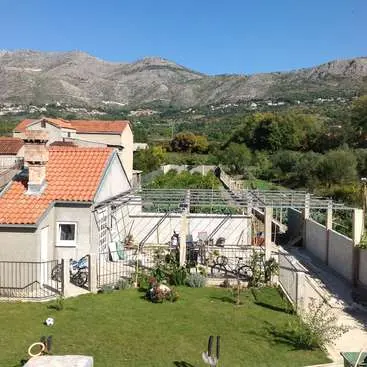Grass Veronica Dubrovnik: herb for outdoor use
Veronica broadleaf, or Dubrovnik, is a herbaceous perennial. It belongs to the plantain family, the dicotyledonous class. There are about 500 species of this plant.
It can be found in the western and central regions of Western Siberia, in the European part of the country. Also grows in the Crimea, in the south of Scandinavia, found in Central and Atlantic Europe.
Dubrovnik has more than 30 species, some of which are in the Red Book
The Dubrovnik plant can be seen:
- in forests, meadows and clearings;
- on dry limestone soil;
- in thickets of bushes;
- in river valleys;
- on the rocks.
This species has a cord-like rhizome and erect stems, both single, and in 2 or 3. Height ranges from 15 cm to 1 meter.
Leaves are ovoid or slightly oblong. The length is about 4 cm, and the width is about 2 cm. Heart-triangular can be on short petioles. From below they are covered with small hairs.
The flowers are arranged in dense racemes that are 6 to 15 cm long. They emerge from the axils of the upper 3 leaves. Cups of 4 or 5 unequal lobes. The corolla has a diameter of 1,5 cm and is blue, rarely pink or white. Stamens with blue filaments. Blooms from May to August.
The fruit is a round-shaped capsule, about 4 mm long, in which flat seeds are stored. Ripening occurs from June to September.
The herbaceous plant Dubrovnik can be used outdoors for decorative purposes. Propagated vegetatively and by seeds.
The use of the herb Dubrovnik
This type of Dubrovnik grass is used not only as a fodder plant for livestock, but also in medicine.
Roots and seeds contain alkaloids. And dried leaves – 554,9 mg of vitamin C per 100 g.
This plant is used to treat:
- tuberculosis;
- bronchial asthma;
- coughing
- inflammatory processes, including in gynecology;
- headache;
- skin diseases;
- purulent wounds;
- bleeding;
- obesity.
Mention of the medicinal properties of this herb dates back to the time of the ancient Roman physician Dioscorides.
For medicinal uses, this herb is harvested during flowering.
- Blooming shoots without recumbent stems are cut with a knife. Roots and fruits are rarely harvested.
- For drying, it is finely chopped and laid out on cloth or paper.
- Drying can be done in special dryers or in a well-ventilated place without direct sunlight. The exposure temperature should not exceed 40 degrees.
- Next, it must be put in paper bags or boxes and stored in a cool place. The term should not exceed 2 years.
It is important to remember that you cannot use herbal treatment for children under 2 years of age. And you also need to know that uncontrolled intake of decoctions can lead to liver damage.
This plant can be used both for traditional medicine, livestock feed, and for decorating paths, borders. And due to the fact that the flower is perennial and blooms all summer long, you can sow it in when decorating flower beds and alpine slides. Many species of this herb are listed in the Red Book, so you need to be careful when collecting it.










